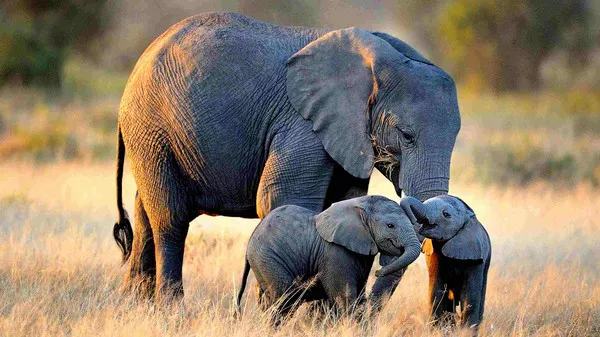Elephants, with their impressive size and gentle demeanor, have captivated human fascination for centuries. Among these magnificent creatures, some stand out for their extraordinary weight, commanding awe and respect from all who encounter them. In this article, we delve into the world of the heaviest elephants, exploring their remarkable characteristics, habitats, and the conservation efforts aimed at protecting these iconic giants.
Introduction to Elephants
Elephants are the largest land animals on Earth, belonging to the family Elephantidae and the order Proboscidea. There are three species of elephants: the African bush elephant (Loxodonta africana), the African forest elephant (Loxodonta cyclotis), and the Asian elephant (Elephas maximus). These majestic creatures are characterized by their long trunks, tusks, and large ears, which help regulate their body temperature.
The Heaviest Elephant Species
While all elephant species are impressive in size, some individuals stand out for their exceptional weight. Among them, the African bush elephant holds the title for the heaviest land animal on the planet. These massive creatures can weigh up to 12,000 pounds (5,443 kilograms) or more, with males generally being larger and heavier than females. The African forest elephant, a smaller cousin of the bush elephant, is also known for its substantial size, although it typically weighs less than its savanna-dwelling relative.
In the Asian elephant species, males can weigh up to 11,000 pounds (4,990 kilograms), making them slightly lighter than their African counterparts. However, Asian elephants still rank among the largest terrestrial mammals, with females also reaching impressive weights of around 6,000 to 8,000 pounds (2,722 to 3,629 kilograms) on average.
Factors Influencing Elephant Size and Weight
Several factors contribute to the size and weight of elephants, including genetics, diet, and environmental conditions. Genetic factors play a significant role in determining an elephant’s size, with individuals inheriting traits from their parents that influence their growth and development. Additionally, elephants require a nutrient-rich diet to support their large bodies, consisting mainly of grasses, leaves, bark, and fruits. Access to abundant food resources can promote healthy growth and contribute to larger body sizes.
Environmental conditions, such as habitat quality and climate, also play a role in determining elephant size. Elephants living in regions with ample food and water resources are more likely to reach their full growth potential compared to those in areas with limited resources. Additionally, environmental factors such as temperature and humidity can influence metabolic rates and energy expenditure, affecting overall body size and weight.
Notable Examples of Heaviest Elephants
Throughout history, several individual elephants have gained fame for their extraordinary size and weight. One notable example is the famous elephant known as “Jumbo,” who lived in the late 19th century and was billed as the largest elephant in captivity. Jumbo, an African bush elephant, stood over 11 feet tall at the shoulder and weighed approximately 13,000 pounds (5,897 kilograms), making him one of the heaviest elephants on record.
Another famous elephant is “Lin Wang,” an Asian elephant who lived in Taiwan’s Taipei Zoo until his death in 2003. Lin Wang gained international fame for his impressive size and longevity, weighing over 12,000 pounds (5,443 kilograms) at his peak and living to the age of 86, making him one of the oldest elephants in captivity.
Conservation Challenges Facing Elephants
Despite their iconic status, elephants face numerous threats to their survival in the wild. Habitat loss and fragmentation, driven by human activities such as deforestation, agriculture, and urbanization, are major threats to elephant populations. As their natural habitats disappear, elephants are forced to compete for limited resources, leading to conflicts with humans and other animals.
Poaching for ivory and other body parts remains a significant threat to elephant populations, particularly in Africa, where tens of thousands of elephants are killed each year for their tusks. The illegal wildlife trade, fueled by demand for ivory and other elephant products, poses a serious threat to the long-term survival of elephants in the wild.
Climate change is also emerging as a growing threat to elephant populations, affecting their habitats and food sources. Rising temperatures, changes in rainfall patterns, and increased frequency of extreme weather events can disrupt elephant migration routes, alter vegetation patterns, and reduce the availability of water sources, putting additional pressure on already vulnerable populations.
Conservation Efforts to Protect Elephants
Despite these challenges, conservation efforts are underway to protect and conserve elephant populations around the world. Conservation organizations, government agencies, and local communities are working together to establish protected areas, wildlife corridors, and conservation programs aimed at safeguarding elephant habitats and reducing human-wildlife conflicts.
Anti-poaching initiatives, including increased law enforcement efforts and community engagement programs, are helping to combat the illegal wildlife trade and reduce poaching pressure on elephant populations. Additionally, campaigns aimed at raising awareness about the importance of elephant conservation and the threats facing these majestic creatures are helping to mobilize public support for conservation efforts.
International agreements such as the Convention on International Trade in Endangered Species of Wild Fauna and Flora (CITES) provide a framework for regulating the trade in elephant products and promoting sustainable management of elephant populations. By implementing measures to regulate ivory trade and combat illegal trafficking, countries can help protect elephants from exploitation and ensure their long-term survival in the wild.
See Also: 5 Smallest Mammal In The World
Conclusion
The heaviest elephants are awe-inspiring creatures that command admiration and respect for their remarkable size and strength. From the African bush elephant to the Asian elephant, these majestic giants play a vital role in their ecosystems, shaping landscapes and enriching biodiversity. However, they face numerous threats to their survival, including habitat loss, poaching, and climate change.
Through concerted conservation efforts and global collaboration, we can work together to protect and conserve elephant populations for future generations. By addressing the root causes of their decline and implementing effective conservation strategies, we can ensure that these magnificent creatures continue to roam the wild for years to come.
You Might Be Interested In:











![The World’s Tiniest Reptile [Revealed!]](https://www.validdownloads.com/wp-content/uploads/2024/02/lizard.webp)
![The World’s Tiniest Reptile [Revealed!]](https://www.validdownloads.com/wp-content/uploads/2024/02/Gentian.webp)













